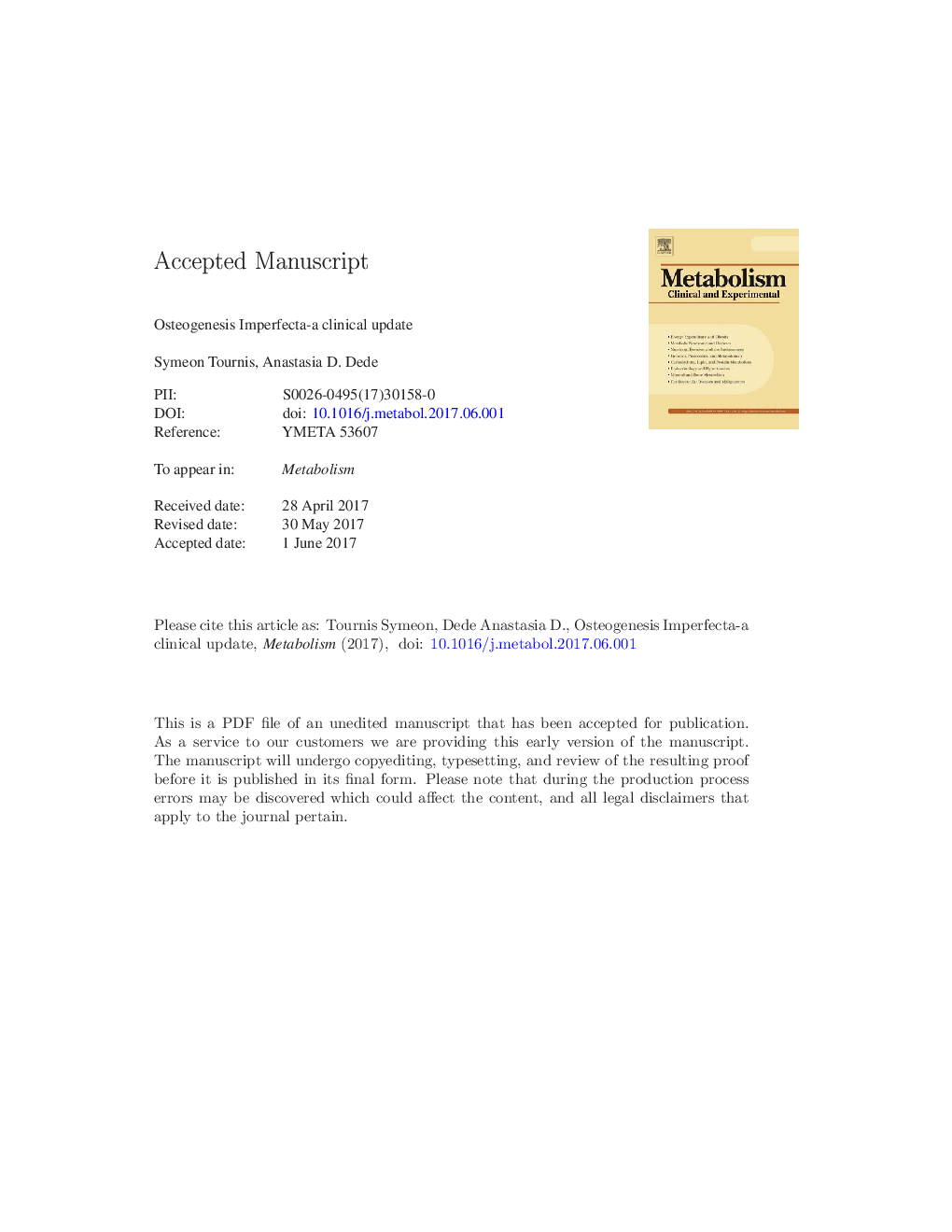| Article ID | Journal | Published Year | Pages | File Type |
|---|---|---|---|---|
| 8633078 | Metabolism | 2018 | 35 Pages |
Abstract
Osteogenesis imperfecta (OI) is the most common inherited form of bone fragility and includes a heterogenous group of genetic disorders which most commonly result from defects associated with type 1 collagen. 85%-90% of cases are inherited in an autosomal dominant manner and are caused by mutations in the COL1A1 and COL1A2 genes, leading to quantitative or qualitative defects in type 1 collagen. In the last decade, defects in several other proteins involved in the normal processing of type 1 collagen have been described. Recent advances in genetics have called for reconsideration of the classification of OI, however, most recent classifications align with the classic clinical classification by Sillence. The hallmark of the disease is bone fragility but other tissues are also affected. Intravenous bisphosphonates (BPs) are the most widely used intervention, having significant favorable effects regarding areal bone mineral density (BMD) and vertebral reshaping following fractures in growing children. BPs have a modest effect in long bone fracture incidence, their effects in adults with OI concerns only BMD, while there are reports of subtrochanteric fractures resembling atypical femoral fractures. Other therapies showing promising results include denosumab, teriparatide, sclerostin inhibition, combination therapy with antiresorptive and anabolic drugs and TGF-β inhibition. Gene targeting approaches are under evaluation. More research is needed to delineate the best therapeutic approach in this heterogeneous disease.
Keywords
RANKLNVFWBVONJCol1a2COL1A1AFF25 hydroxy vitamin DP1NPaBMDGFRBPSCTXTGF25(OH)DAprWhole body vibrationOsteonecrosis of the jawBisphosphonatesOsteogenesis imperfectatransforming growth factorAreal bone mineral densityCNSLumbar spinecentral nervous systemVertebral fracturesAtypical fractureatypical femoral fracturesBone fragilityGlomerular filtration rateinternational unitsAcute phase reactionCollagen
Related Topics
Life Sciences
Biochemistry, Genetics and Molecular Biology
Endocrinology
Authors
Symeon Tournis, Anastasia D. Dede,
